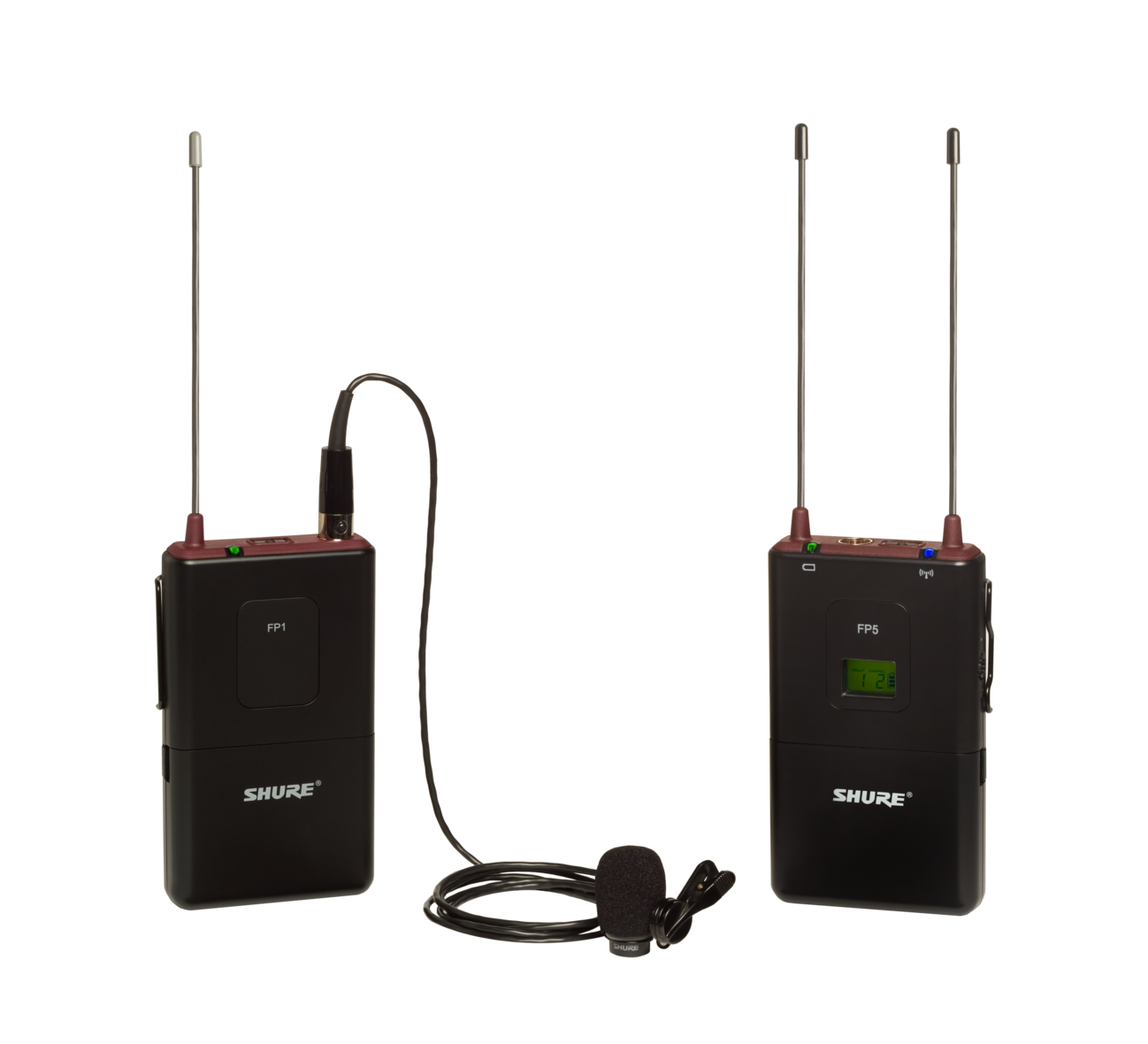Shure FP15/83 Combo Wireless System, H5
Our teaching team for our International Missions Photography Workshop in Lisbon, Portugal, started prioritizing the subjects we are teaching. Poor sound is the number one technical mistake we see most often made in multimedia projects.
Your audience will tolerate poor-quality images more than poor audio in a multimedia presentation.
Before you can teach people how to make better audio for their projects, you need to address having a good microphone.
Simple Solution
It would help if you got the microphone as close as possible to the source for the best recording. Recording with a DSLR or video camera’s built-in microphone requires you to be on top of someone to get a sound recording of them during an interview.
Clipping a lavalier microphone on their clothing as close to their mouth will give you the best consistent results. Having a wireless system, so you don’t have cables all over, and having to pack a lot of extension cables is the best way to go.
Today you can easily sync an audio recording with your video recording in post-production with today’s software. Be sure to clap when all the recording devices are rolling, and then you can quickly line up the spikes in the software. I would go even so far as to say clapping 2 or 3 times will make it even easier.
| Align the two tracks using the spikes |
So what do your record with? My number one recommendation is based on the assumption that most of those taking our workshop will have a smartphone. The second assumption is there is no need to spend a lot of money on recording gear; instead, buy those things that will complement yours already in your bag.
You can buy the RØDE smartLav microphone designed to work with a smartphone. If you look at the link, you will notice the 1/8 plug has four connections rather than the typical 2 or 3 connections. This design makes the microphone work with your smartphone.
You can use the microphone with any recording App you have on your phone, and for those with an iPhone, there is the RØDE Rec App. There are many Apps to choose from for Android and iPhones. You want to use a recorder that controls the gain setting. Auto Gain setting is what you want to avoid.
Practice, Practice, Practice
After buying the gear, you need to test it repeatedly. You need to practice recording with your video and the audio. It would help if you got used to starting and stopping the sound and camera together. It would help if you practiced always having claps.
The reason the standard for movies has been the clapboard. You show this in the video so you can match the sound spike of the clap to the visual. But, of course, clapping your hands together in the camera’s frame will also work.
Practice putting those clips together in the software. Next, you must practice getting the sound file from your smartphone to your computer. Finally, you can email it or use Evernote or dropbox to transfer the file.
Put those files in software like iMovie, Final Cut Pro X, or Adobe Premier and practice lining up the two files. You may find out that the auto-sync will not always work because the sound is so faint on the camera compared to your smartphone recording.
Practice any recording scenario that you might want to use. For example, you may want to do interviews where people are sitting still, or maybe they are walking toward you. Always practice before you do this on the job when you must have the sound for the project.


